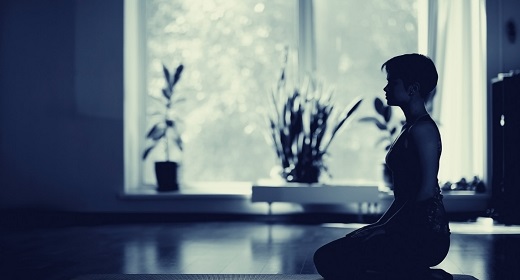by Peter Wohlleben: We employ sayings all the time to help us figure out what nature is trying to tell us…
“Red sky in the morning, sailor’s warning,” we say knowingly, preparing for rain. In The Hidden Life of Trees and The Inner Life of Animals, by Peter Wohlleben, published by Greystone Books, the German author brought to life research and scientific information to help us understand the world around us. Clearly, he struck a chord: both books shot to the bestseller lists in North America and stayed there. While you’re waiting for the third in that trilogy, you can still be delighted by another of his books. In The Weather Detective: Rediscovering Nature’s Secret Signs, encourages us to look at nature to understand what trees, the garden and animals can tell us about the weather. In this excerpt, he shares how to tell time by observing natural signs.
The bird clock
Just as the clock can serve us for purposes in nature besides telling the time, so, too, can nature itself tell us the time, at least in a rudimentary fashion. As well as noting the position of the sun, we should also observe the birds — and listen to their morning song.
Why do birds sing, anyway? It’s certainly not for our sake that they fill the air with their melodies, and neither is pure joie de vivre the reason for their warbling. In fact, birdsong is not unlike a dog raising its hind leg to urinate against the post of the local road signs: both serve to stake out territory. And since birdsong is fleeting in nature, it needs to be repeated over and over. The basic message of their melodies for rival males is: “Watch it! This is my patch!” Directed at females, on the other hand, the male’s song is his way of promoting himself as a strong and virile mate. That is why most species don’t sing in concert.
Species that put particular effort into producing a long series of sound sequences are also particularly staunch defenders of their territory. Blackbirds and robins are notable examples. House sparrows or rooks, which also count as songbirds, have a simpler call, and are more easygoing and amicable about nesting in close proximity to others of their species.
A diverse garden will become a habitat for a variety of species. But if all these birds were to sing at the same time, each one’s melody would be drowned out in the cacophony of voices. In order for each singer to be adequately appreciated by his rivals or his sweetheart, each species focuses on a specific time in the morning. Or rather, not a time, but a certain position of the sun. These are relative to sunrise, a precisely definable event. Unfortunately, it changes constantly, as throughout spring, the sunrise takes place a little earlier each day, until the summer solstice on June 21, when it starts getting later again. So, birdsong is perhaps not ideal as a genuine replacement for your watch, although each species tends to observe its relative time slot, day by day, with astonishing accuracy.
You can find a good selection of bird species and the times they sing online. According to one German website, www.biologie-wissen.info, under the keyword Vogeluhr (“bird clock”), the schedule would look like this: the skylark begins while it’s still dark, a whole one and a half hours before sunrise. The little redstart is next to step onto the stage. The blackbirds perform exactly one hour before sun- rise, with the chiffchaffs following half an hour later. As the sun begins to show on the horizon, then all the birds join in the dawn chorus. From then on, if you want to determine the time, you’ll need some other living things to fall back on: it’s time to turn your attention to flowers.
The flower clock
Carl Linnaeus, a Swedish natural scientist of the eighteenth century, made an exciting discovery during his nature walks. He realized that the flowers of different species of plants opened their flowers at different times of the day, with impressive reliability. They were so reliable, in fact, that they could rival the accuracy of the church clocks at the time. What better, then, than to create a living clock composed of a variety of flowering plants? Linnaeus put the idea into practice, planting a very special flower bed in the Uppsala Botanical Garden. He arranged the plants in the shape of a clock face, dividing the bed into twelve segments. In each section, the flowers opened at the appointed hour, enabling passersby to tell the time. However, the clock didn’t function quite as intended, since the plants finished flowering after a few weeks and had to be replaced constantly. Moreover, specimens from the mountains behaved differently in the city, because of the warmer climate. Nevertheless, the principle is fascinating, and even without planting a clock-shaped bed, you can still tell the time from your garden with the help of your perennials and herbs.
Pumpkins and zucchini kick things off first by opening their flowers at 5 o’clock in the morning. From 8 a.m., the marigolds spread out their petals, and the daisies follow at 9. When the sun is at its zenith in the south, midday flowers (Mesembryanthemum, also known as ice plants) open their blossoms. Between 2 p.m. and 3 p.m., dandelions start to close up, and by 3 p.m. the gourds have finished for the day. At around 6 p.m., poppies also shut up shop.
But why do plants go to the trouble of opening their flowers at different times? The reason for this is to attract pollinating insects, which risk being overwhelmed by choice. At the rush hour, when many flowers are open for business, the bees can’t possibly visit all of the plants on offer, so some flowers would have to go without a visit. It gives you a competitive edge if you tout your nectar and pollen later in the day, when your rivals are asleep. So it’s a way of improving the chances of pollination. It also helps the bees to take advantage of the available stocks of nectar, to bring as much as they can back to the hive for the winter. The more nectar supplies they bring back, the more bees survive of the next generation, which in turn ensures better pollination chances the following year.
Having said that flowers keep good time, in fact researchers from the University of Göttingen have discovered that even flowers’ internal clocks can be slow. This also appears to be linked to their effort to attract bees. Once the flowers are pollinated, they close on time. But if they’re still waiting for a visit, they extend their opening times, probably in the hope they might still attract a passing pollinator. If you notice distinct changes from the normal rhythm of your garden’s flower clock, there may be a lack of beekeepers and wild bees in your locality. You could take remedial action by setting up an insect hotel or even installing an entire bee colony in your garden.
Excerpted from the book The Weather Detective: Rediscovering Nature’s Secret Signs by Peter Wohlleben. Copyright © 2018 by Peter Wohlleben. Reprinted with permission of Dutton, an imprint of Penguin Publishing Group, a division of Penguin Random House, LLC.
This article has been changed from a previous version which stated that this was the third in Wohlleben’s trilogy. It is, in fact, a separate book.

















































